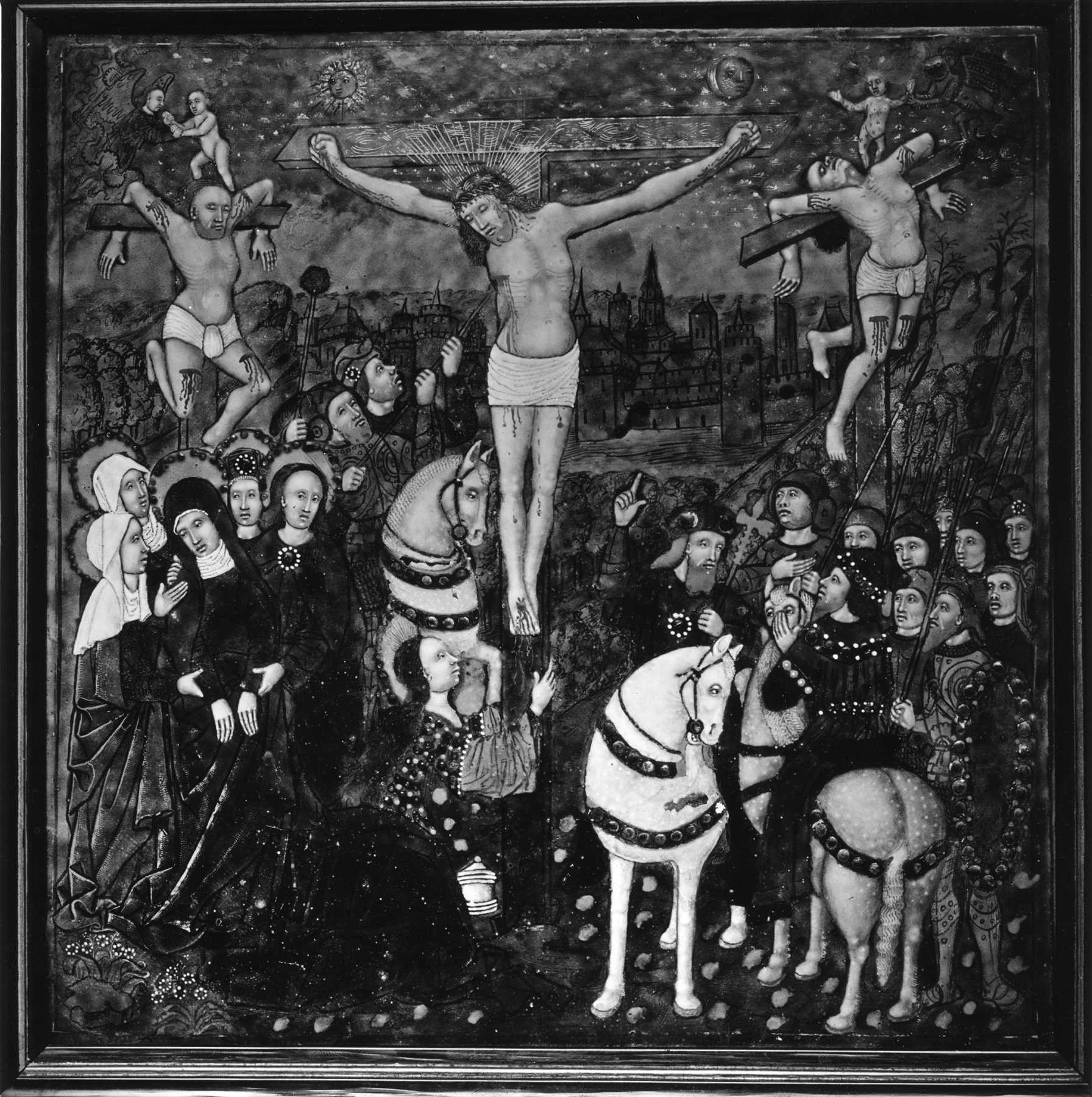The Crucifixion
(Renaissance Europe )
This plaque was probably the central panel of a triptych. In the center, Christ, wearing the green crown of thorns, is crucified on a tall tau-shaped cross, above which appear the discs of the sun and the moon. The blind Longinus pierces Christ's side with a lance that is guided by a soldier. Christ's eyes are closed and his head is dropped to the right. On that side is seen the Penitent Thief, his limbs broken and bleeding, whose soul is received by an angel. On this same side is the group of holy women and St. John. The standing Virgin sways into their supporting arms. Near them St. Mary Magdalene kneels and embraces the shaft of the cross. On Christ's left side the scarred soul of the Unrepentant Thief is received by a demon. The Centurion, mounted on a white horse and wearing a knight's necklace, raises his right hand to declare the divinity of Christ. He holds a halberd in his other hand. To his left are two horsemen in a group of armored foot-soldiers holding a banner, military forks and partisans. The soldier on the extreme right bears a long shield decorated with a grotesque bearded mask.
The sky is spangled with stars and the ground is strewn with stones. Beyond woods and between hills appears Jerusalem is a medieval city, watered by a stream, with its temple indicated as a hexagonal turreted church.
Provenance
Provenance (from the French provenir, 'to come from/forth') is the chronology of the ownership, custody, or location of a historical object. Learn more about provenance at the Walters.
Richard Fisher, Hill Top, Midhurst, Sussex, by purchase; Richard C. Fisher [date and mode of acquisition unknown]; Sale, Christie's, London; Charles Borradaile, Brighton, by purchase; George Robinson Harding, London, by purchase; Henry Walters, Baltimore, January 1906, by purchase; Walters Art Museum, 1931, by bequest.
Conservation
| Date | Description | Narrative |
|---|---|---|
| 10/14/1940 | Treatment | coated; other |
| 1/1/1953 | Examination | other |
| 1/31/1961 | Treatment | cleaned; loss compensation; coated |
Geographies
France, Limoges (Place of Origin)
Measurements
H: 11 9/16 x W: 11 5/16 in. (29.3 x 28.8 cm)
Credit Line
Acquired by Henry Walters, 1906
Location in Museum
Not on view
Accession Number
In libraries, galleries, museums, and archives, an accession number is a unique identifier assigned to each object in the collection.
In libraries, galleries, museums, and archives, an accession number is a unique identifier assigned to each object in the collection.
44.347


